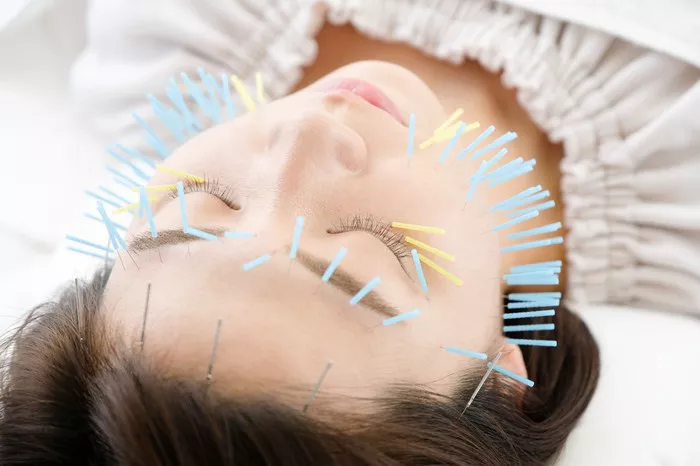Scars, whether from surgery, injuries, or skin conditions, can often be a lasting reminder of the body’s healing process. As advancements in dermatology continue to evolve, individuals seek effective and innovative ways to minimize the appearance of scars. One such approach gaining popularity is the use of dermal fillers to address scar imperfections. This article delves into the realm of scar rejuvenation, exploring the question: Can you put filler in a scar? By unraveling the science behind fillers, examining the types of scars suitable for this intervention, and considering the potential benefits and risks, we aim to provide a comprehensive understanding of the role fillers play in scar treatment.
The Basics of Dermal Fillers: Aesthetic Allies in Skin Enhancement
Before delving into the specifics of using fillers for scar treatment, it’s essential to grasp the basics of dermal fillers and their role in aesthetic procedures. Dermal fillers are injectable substances designed to add volume, smooth wrinkles, and rejuvenate the skin’s appearance. They come in various formulations, with hyaluronic acid, collagen, and poly-L-lactic acid being among the commonly used ingredients. These fillers work by plumping the skin and promoting collagen production, resulting in a more youthful and revitalized appearance. While fillers are traditionally associated with combating aging signs, their application extends beyond fine lines and wrinkles to address other dermatological concerns, including scar treatment.
Understanding Scar Tissue: The Complex Nature of Scarring
Scars form as part of the body’s natural healing process in response to injury, surgery, or certain skin conditions. The complex nature of scar tissue involves the reorganization of collagen fibers to repair and close wounds. However, this reparative process can lead to visible changes in skin texture, color, and elasticity. The type of scar that forms depends on various factors, including the depth and extent of the injury, genetic predispositions, and individual healing responses. Common scar types include hypertrophic scars, keloids, atrophic scars, and contracture scars. Each type presents unique challenges and considerations when contemplating interventions like the use of dermal fillers.
The Put Filler in a Scar: A Targeted Approach to Scar Enhancement
The concept of putting filler in a scar involves the strategic injection of dermal fillers into specific areas of scar tissue to address textural irregularities, depressions, or volume loss. This targeted approach aims to improve the overall appearance of the scar by restoring volume and promoting a smoother skin contour. While not a one-size-fits-all solution, the use of fillers in scars is gaining recognition for its potential to offer non-surgical scar revision options. By precisely placing fillers within scar tissue, dermatologists and healthcare professionals aim to achieve a harmonious integration of the scar with surrounding skin, mitigating the visible signs of scarring.
Types of Scars Amenable to Filler Treatment: Navigating Scar Diversity
Not all scars are created equal, and the suitability of using fillers in scars depends on the type and characteristics of the scar. Hypertrophic scars, characterized by raised tissue that remains within the boundaries of the original wound, may benefit from filler treatment to soften their appearance. Atrophic scars, which result from a loss of underlying tissue, can be addressed by injecting fillers to restore volume and elevate the depressed area. Boxcar scars, characterized by broad and defined depressions with sharply defined edges, may also be suitable candidates for filler treatment. The key is to assess each scar individually, considering its size, location, and specific attributes to determine the optimal approach.
Benefits of Putting Filler in a Scar: Aesthetic and Psychological Impact
The decision to put filler in a scar is driven by the potential benefits that this intervention offers. One of the primary advantages is the improvement in the aesthetic appearance of the scar. By addressing textural irregularities, volume loss, and depressions, fillers contribute to creating a smoother and more even skin surface. This aesthetic enhancement can lead to increased confidence and improved self-esteem for individuals who may feel self-conscious about their scars. Additionally, the non-surgical nature of filler treatments provides a less invasive option for scar revision, making it an appealing choice for those seeking improvements without the downtime associated with surgical procedures.
The Procedure: What to Expect When Filling a Scar
The process of filling a scar with dermal fillers typically involves a series of steps designed to ensure precision and optimal results. The procedure begins with a thorough assessment of the scar by a qualified dermatologist or healthcare professional. This assessment includes an examination of the scar type, its characteristics, and the patient’s overall skin health. Once the scar is deemed suitable for filler treatment, the area is cleansed, and a topical anesthetic may be applied to minimize discomfort during the injection process. The filler is then strategically injected into the scar tissue using fine needles or cannulas, depending on the practitioner’s technique. The number of injections and the amount of filler used depend on the size and extent of the scar.
Choosing the Right Filler
Selecting the appropriate filler for scar treatment is a critical aspect of achieving optimal results. Different fillers have unique properties and consistencies that make them more suitable for specific scar types. Hyaluronic acid fillers, known for their ability to attract and retain moisture, are often chosen for atrophic scars to plump and hydrate the depressed areas. Collagen-stimulating fillers, such as those containing poly-L-lactic acid, contribute to the production of new collagen, promoting volume and texture improvement over time. The choice of filler is personalized to the individual’s scar characteristics and the desired outcome, emphasizing the importance of a thorough consultation with a qualified practitioner.
Immediate Results and Long-Term Impact
One of the advantages of using dermal fillers for scar treatment is the potential for immediate results. Patients often notice an improvement in the appearance of the scar immediately after the filler is injected. This instantaneous enhancement provides a visible and gratifying change, contributing to the psychological benefits of the procedure. However, it’s important to note that the longevity of filler outcomes varies depending on the type of filler used. Hyaluronic acid fillers typically offer temporary results, lasting several months to a year, while collagen-stimulating fillers may provide longer-lasting benefits as they contribute to ongoing collagen production.
Potential Risks and Considerations
While the use of fillers in scars has shown promising results, it’s essential to acknowledge the potential risks and considerations associated with this intervention. As with any cosmetic procedure, there is a risk of side effects, including swelling, bruising, and redness at the injection site. In some cases, individuals may experience allergic reactions to the filler substance. The expertise of the practitioner is crucial in minimizing these risks, emphasizing the importance of seeking treatment from qualified and experienced professionals. Additionally, the temporary nature of some fillers means that repeat treatments may be necessary to maintain the desired results, which should be factored into the decision-making process.
Combination Therapies
In certain cases, combining filler treatments with other scar revision modalities can enhance the overall outcomes. For example, combining filler injections with laser therapy or microneedling may address multiple aspects of scar appearance, including texture, color, and collagen remodeling. This synergistic approach allows for a comprehensive and customized scar revision strategy tailored to the individual’s specific needs. However, the decision to pursue combination therapies should be made in consultation with a qualified dermatologist or healthcare professional, considering the unique characteristics of the scar and the desired outcome.
The Importance of Professional Guidance
Navigating the realm of scar filling with dermal fillers requires professional guidance to ensure safe and effective outcomes. Dermatologists and qualified healthcare professionals possess the expertise to assess scars, determine suitability for filler treatments, and develop personalized plans based on individual needs. A consultation with a skilled practitioner allows for open communication about expectations, potential risks, and the likely outcomes of the procedure. Professional guidance not only enhances the safety of the intervention but also contributes to a positive and satisfying experience for individuals seeking scar rejuvenation through filler treatments.
Conclusion
In conclusion, the question of whether you can put filler in a scar opens up a realm of possibilities for individuals seeking scar rejuvenation. Dermal fillers, with their ability to address textural irregularities, volume loss, and depressions, offer a non-surgical and effective option for scar treatment. By understanding the types of scars amenable to filler intervention, the benefits and considerations associated with the procedure, and the importance of professional guidance, individuals can make informed decisions about enhancing the appearance of their scars. As the field of dermatology continues to advance, the use of fillers in scars stands as a promising avenue for achieving smoother, more refined skin and empowering individuals on their journey to scar improvement.
[inline_related_posts title=”You Might Be Interested In” title_align=”left” style=”list” number=”6″ align=”none” ids=”3812,3753,3751″ by=”categories” orderby=”rand” order=”DESC” hide_thumb=”no” thumb_right=”no” views=”no” date=”yes” grid_columns=”2″ post_type=”” tax=””]































